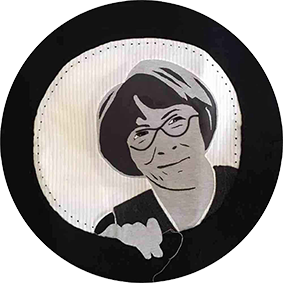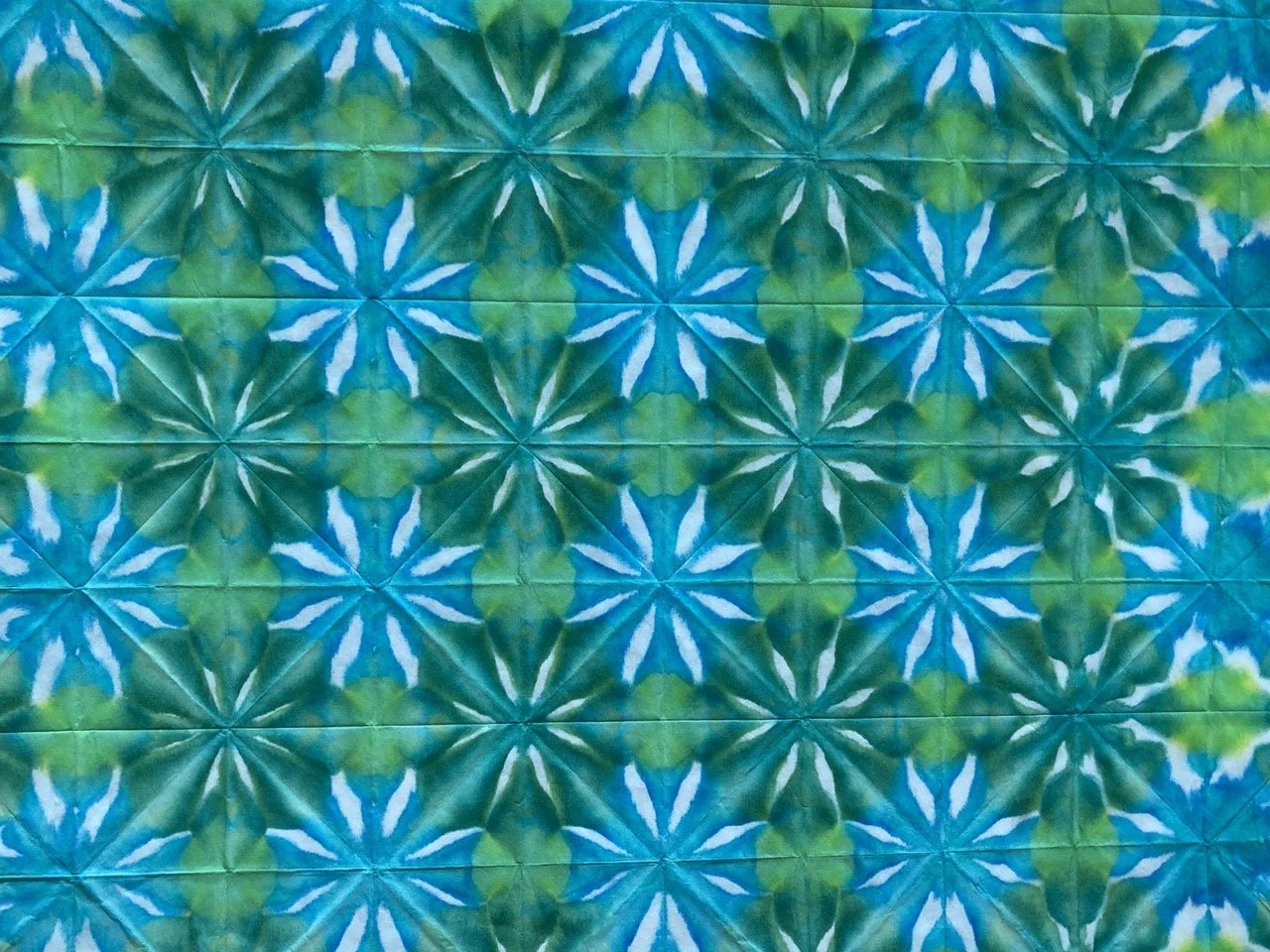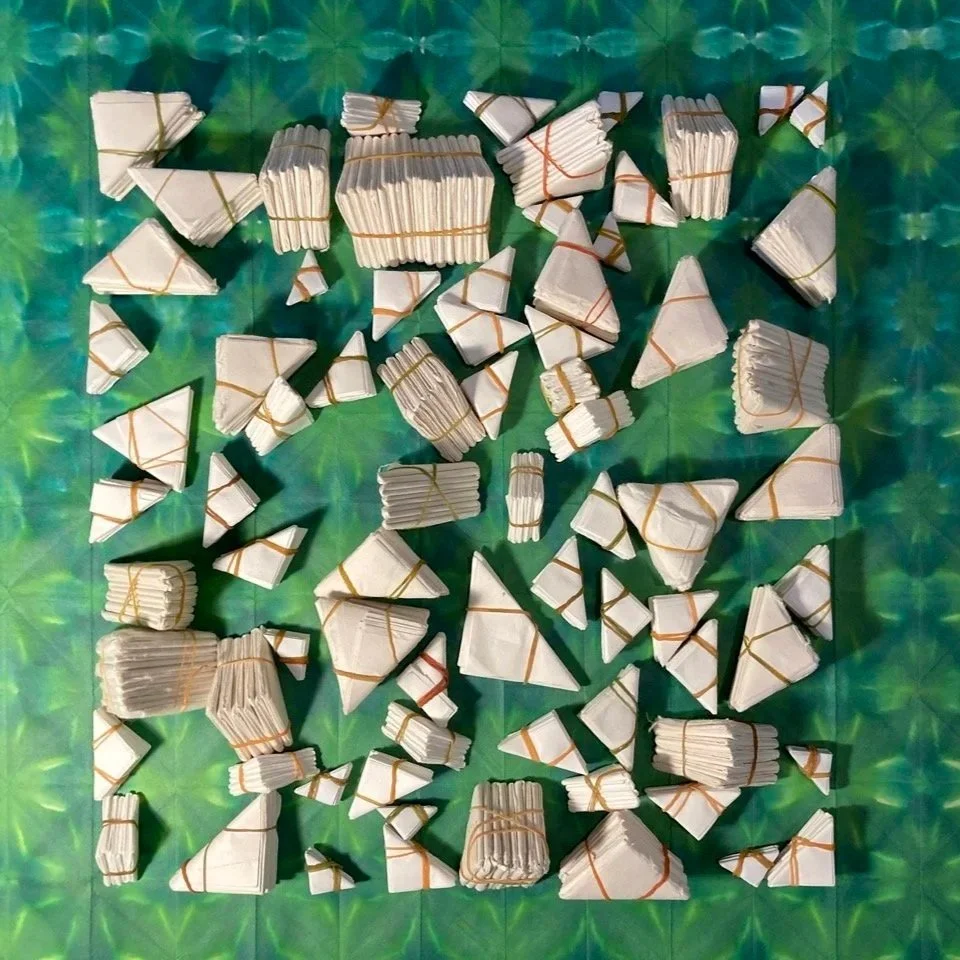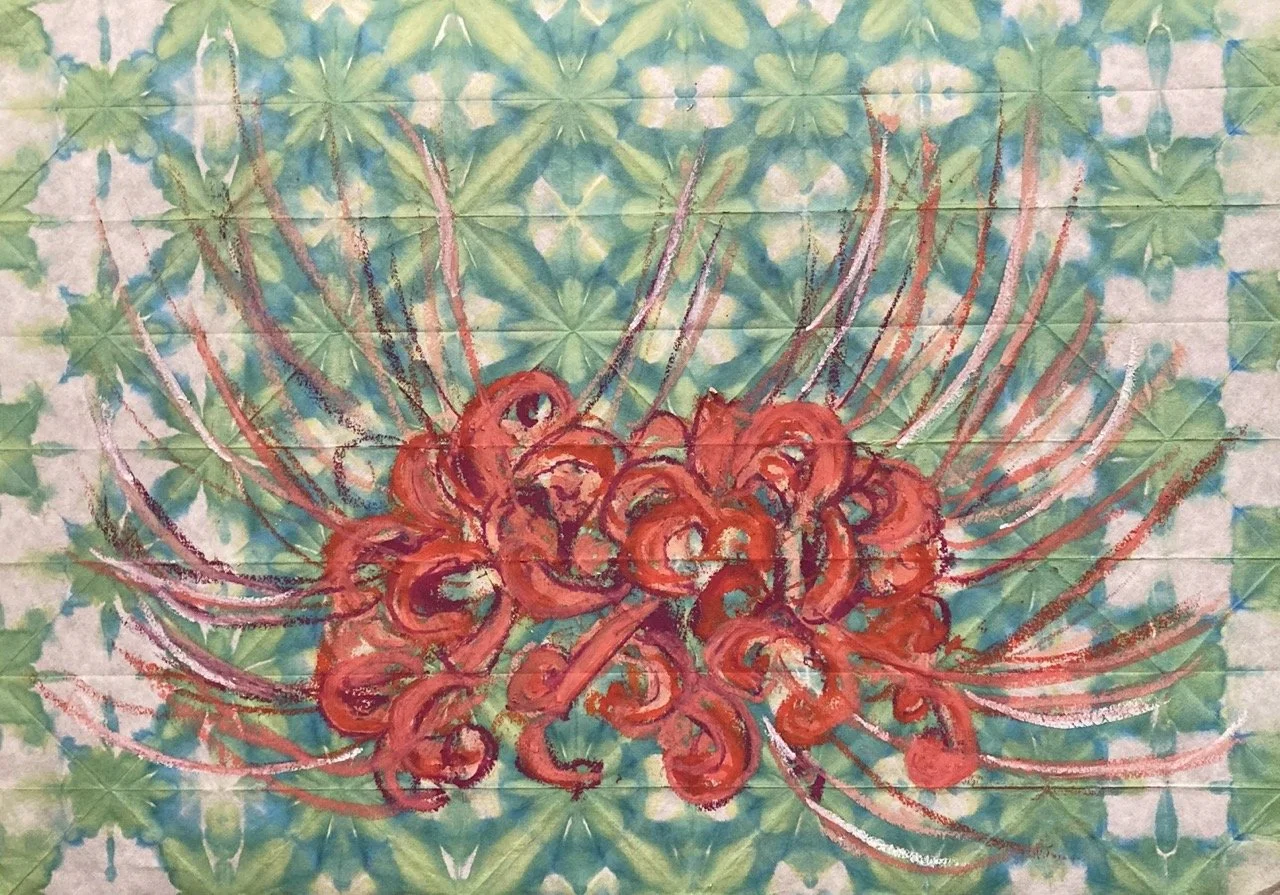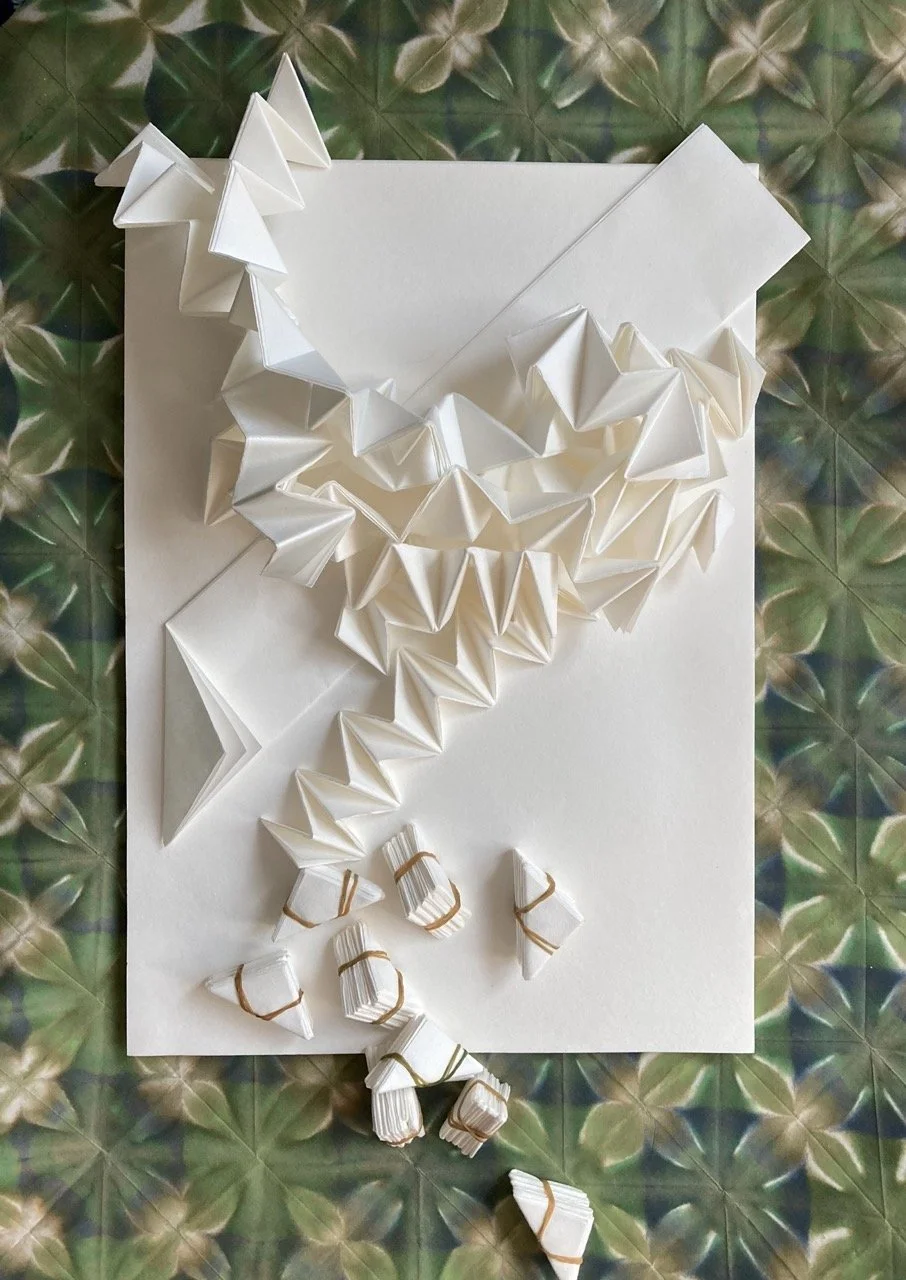Ori-Zome
FOLD-DYE
Orizome (折り染め) is a traditional Japanese art form that combines paper folding (origami) with dyeing. The name itself translates to "folded dyeing." This technique creates beautiful and often surprising geometric and symmetrical patterns on paper.
The process involves folding a piece of paper, typically washi (Japanese paper), in various intricate ways. Once folded, the corners, edges, or entire surfaces of the folded paper are dipped into different coloured dyes. The folds act as a resist, preventing the dye from reaching certain areas of the paper. This results in unique patterns that are only fully revealed when the paper is unfolded.
Workshop + Exhibition
with Caroline Sato
-
The interplay between the precise folds and the application of colour is central to the art form.
Folding: A sheet of paper is folded in a specific sequence. The folds can be simple or complex, and different folding techniques will produce different patterns.
Dyeing: The folded paper is then dipped into various dyes. The artist can dip different corners or edges into different colours to create multi-coloured designs. The absorbency of the paper allows the dye to seep into the exposed areas.
Unfolding and Drying: After dyeing, the paper is carefully unfolded to reveal the pattern. It is then left to dry flat.
-
Washi Paper: Traditional orizome is done on washi paper, which is known for its absorbency, strength, and durability, even when wet.
Variety of Patterns: The patterns created can range from simple and bold to incredibly intricate and delicate, depending on the folding technique and how the dye is applied. Common folding methods include accordion folds, triangular folds, and square folds, which can be further manipulated to create complex designs.
Element of Surprise: One of the joys of orizome is the element of surprise. Because the full pattern is not visible until the paper is unfolded, the final result is often an unexpected and delightful discovery.
-
Orizome can be done with many types of paper and pigments. Chinese rice paper, food dyes, acrylic inks etc. It is always good to experiment. For workshops however, I use sturdy paper made in Japan for calligraphy. They drink the colours in a sophisticated way and don’t disintegrate easily when wet. I use pigments that are safe for children and dry relatively water fast.
Toshiki Yamamoto has done wonderful work in sharing orizome and fostering a community with his blog, instagram and youtube and annual Orizome festival in Kanto, Japan.
His visual charts cross language barriers so while everything is in Japanese, it is possible for anyone to follow
Awagami factory in Shikoku sell many things related to washi, including an orizome kit with dye. I have not tried it. If you do, let us know how it goes! It is always great to support a business like theirs. Their website is in English and Japanese and they hold their orizome workshops globally.
awagami.com
Ichihide (in Japanese) sells a set of small square papers and dye, also prefolded papers. The paper drinks dye beautifully and is used at the orizome festival too. I have had vibrant and colourfast results with this product.
www.ichihide.co.jp/
